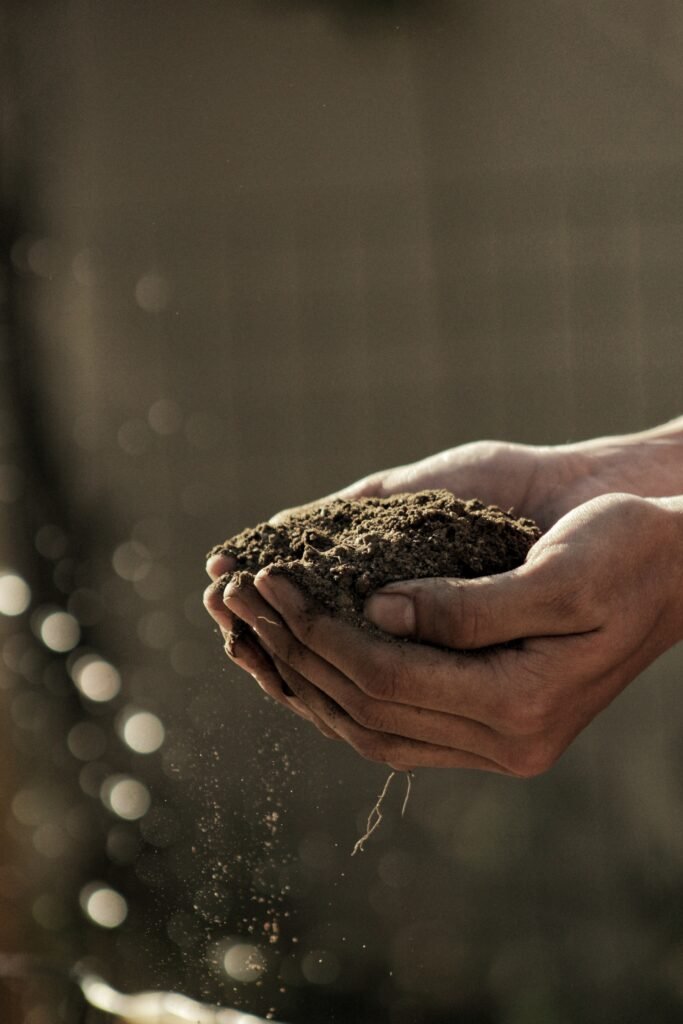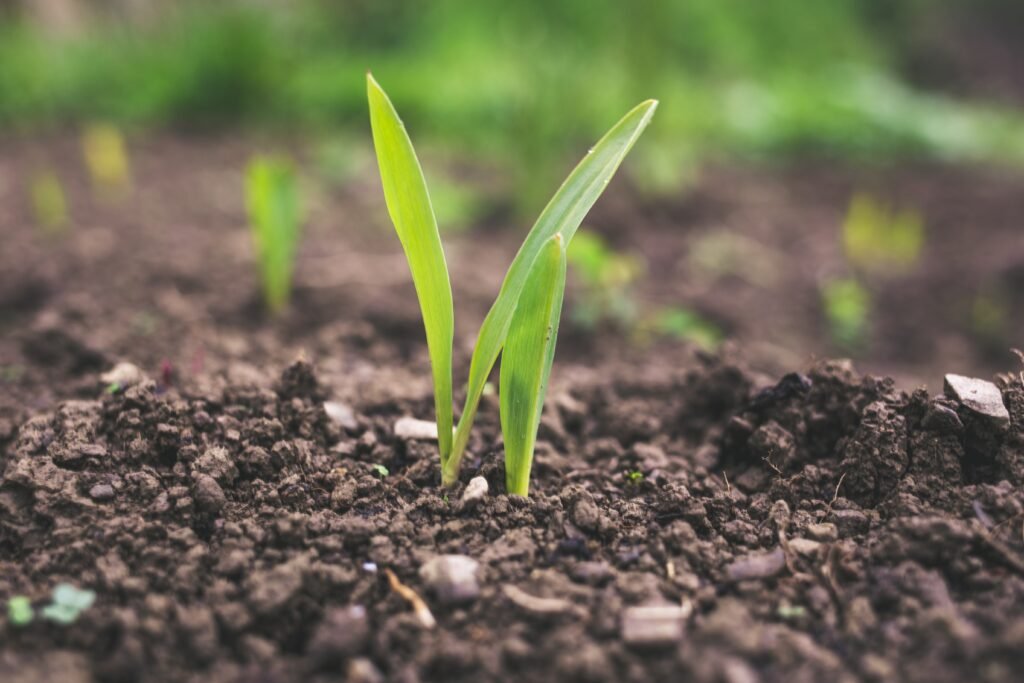Have you ever wondered why the fruit harvest seems to be unusually low this year? It’s as if nature forgot to bless us with an abundance of juicy, luscious fruits that we eagerly await. The absence of vibrant oranges, succulent strawberries, and sweet apples has left us longing for the flavors of summer. But fear not, for there may be a surprising explanation behind this shortage. Let’s explore the possible reasons for the mysterious scarcity of fruits and uncover the truth behind this year’s disappointing harvest.

Weather conditions
Frost
Frost can have a significant impact on fruit harvests, leading to decreased yields or even a complete loss of fruit. When temperatures drop below freezing, frost can damage blossoms, preventing them from developing into fruit. It can also harm young fruit, causing them to wither and fall off prematurely. Frost damage is especially severe during the early stages of fruit development, when the plants are most vulnerable. To protect your fruit crops from frost, it is important to take proactive measures such as using frost blankets or wind machines to create a warm microclimate around your trees.
Drought
Drought conditions can be devastating for fruit trees, as they rely heavily on water for proper growth and fruit production. Without an adequate water supply, fruit trees may experience stunted growth, reduced flowering, and poor fruit development. Drought stress can also make trees more susceptible to pests and diseases, further impacting the fruit harvest. To mitigate the effects of drought on fruit crops, it is essential to maintain proper irrigation practices and ensure that trees receive sufficient water during dry periods. Mulching around the base of the trees can also help conserve soil moisture.
Heatwaves
Heatwaves can pose a significant challenge for fruit growers, as excessive heat can cause stress to fruit trees and negatively impact fruit production. High temperatures during the flowering period can lead to poor fruit set, resulting in a low fruit harvest. Heatwaves can also increase the rate of fruit ripening, leading to premature drop or reduced fruit quality. To mitigate the impact of heatwaves, it is crucial to provide shade for young trees and ensure proper irrigation to prevent water stress. Additionally, employing techniques such as reflective mulching and evaporative cooling can help regulate tree temperature during extreme heat events.
Extreme weather events
Extreme weather events, such as hurricanes, tornadoes, or hailstorms, can cause significant damage to fruit crops. Strong winds can snap branches, uproot trees, or knock off fruit, resulting in a reduced harvest. Hailstorms can damage fruit, leaving them bruised or with holes, rendering them unsuitable for consumption or sale. To protect fruit trees from extreme weather events, appropriate measures should be taken, such as installing windbreaks, using netting or hail guards, and maintaining regular tree maintenance to prevent weak or vulnerable branches.
Pests and diseases
Insect infestation
Insects can wreak havoc on fruit trees, feeding on foliage, flowers, and fruit, causing significant damage and reducing the fruit harvest. Common pests include aphids, codling moths, fruit flies, and mites. These pests can chew through leaves, tunnel into fruit, or introduce diseases while feeding. To manage insect infestations, it is important to monitor trees regularly, identify the pests present, and employ appropriate control methods such as using organic insecticides, deploying pheromone traps, or practicing integrated pest management techniques.
Bacterial infections
Bacterial infections can severely impact fruit trees, leading to disease symptoms such as leaf spots, cankers, fruit rot, and wilting. Bacteria can enter trees through wounds or natural openings, proliferating in favorable conditions and causing damage. Fire blight, bacterial spot, and crown gall are among the common bacterial infections affecting fruit trees. To prevent bacterial infections, it is crucial to maintain good orchard hygiene, promptly remove infected plant material, and practice proper sanitation techniques. Copper-based fungicides can also be used as a preventative measure.
Fungal diseases
Fungal diseases are a common challenge in fruit orchards, and they can significantly reduce the fruit harvest if left untreated. Diseases such as apple scab, powdery mildew, and brown rot can lead to leaf defoliation, fruit discoloration and rot, and overall decline in tree health. Fungi thrive in moist environments, so it is important to manage orchard humidity through proper pruning and spacing, as well as ensuring good air circulation. Fungicides, both traditional and organic, can also be used to control and prevent fungal infections.
Viral diseases
Viral diseases can have a devastating impact on fruit trees, causing a range of symptoms including stunted growth, leaf curling, mosaic patterns on leaves, and poor fruit quality. Once infected, there is no cure for viral diseases, making prevention and control crucial. Avoiding introduction of infected plant material, maintaining proper orchard hygiene, and practicing insect control to prevent viral vectors are important disease management strategies. Additionally, grafting onto virus-resistant rootstocks and regular monitoring of tree health can help keep viral diseases at bay.

Pollination issues
Lack of pollinators
Pollination is a crucial process for fruit tree reproduction and fruit development. Without proper pollination, fruit trees may produce fewer or no fruit at all. Lack of pollinators, such as bees, butterflies, or other insects, can be a significant factor contributing to low fruit harvests. Pollinators play a vital role in transferring pollen from male flower parts to female flower parts, enabling fertilization and fruit formation. To attract pollinators to your orchard, create a pollinator-friendly environment by planting diverse flowering plants, providing nesting habitats, and avoiding the use of harmful pesticides.
Pollinator decline
The decline of pollinator populations, especially bees, has become a global concern and can have a detrimental impact on fruit crops. Factors such as habitat loss, pesticide use, climate change, and diseases have contributed to the decline of pollinators. Without sufficient pollinators, fruit trees may experience reduced fruit set and lower yields. To support pollinator populations, it is crucial to create pesticide-free zones, plant native flowering plants, provide nesting sites, and advocate for pollinator-friendly practices in agriculture.
Inefficient pollination
Even when pollinators are present, inefficient pollination can occur, leading to a low fruit harvest. Factors such as weather conditions, inadequate pollinator activity, or insufficient pollinator diversity can all contribute to inefficient pollination. To enhance pollination, you can adopt techniques such as hand pollination, which involves transferring pollen manually between flowers, or introducing additional pollinator species that are known to be effective for your specific fruit tree varieties.
Soil quality
Nutrient deficiencies
Proper soil nutrient levels are crucial for fruit tree health and productivity. Nutrient deficiencies can result in poor tree growth, reduced flowering, and ultimately, a low fruit harvest. Common nutrient deficiencies in fruit trees include nitrogen, phosphorus, potassium, and micronutrients such as iron, zinc, and magnesium. Conducting regular soil tests can help identify nutrient deficiencies, and appropriate soil amendments or fertilization programs can be implemented to address them.
Soil erosion
Soil erosion can have detrimental effects on fruit orchards, leading to the loss of topsoil, reduced fertility, and erosion of tree roots. Erosion can occur due to factors such as heavy rainfall or improper land management practices. To prevent soil erosion, practices such as contour farming, installing erosion control measures like terracing or retaining walls, and maintaining ground cover vegetation can be implemented. Mulching the orchard floor can also help reduce soil erosion and improve soil structure.
Soil pollution
Soil pollution can significantly impact fruit tree health and fruit quality. Pollution can arise from the use of chemical pesticides, herbicides, and fertilizers, as well as from industrial activities or contamination through improper waste disposal. Pollutants can accumulate in the soil, negatively affecting the root system, nutrient uptake, and overall tree health. To prevent soil pollution, it is essential to adhere to responsible pesticide and fertilizer use, adopt organic farming practices, and advocate for sustainable waste management practices in your area.

Crop management practices
Inadequate pruning
Pruning is an essential practice for maintaining the health and productivity of fruit trees. Improper or inadequate pruning can result in overcrowded branches, reduced light penetration, poor air circulation, and increased susceptibility to diseases. It can also affect fruit quality and yield. Regular pruning helps maintain optimal tree structure, promotes strong growth, removes dead or diseased wood, and enhances light exposure to promote proper fruit development. Understanding the pruning needs of different fruit tree species is important to ensure effective pruning practices.
Improper fertilization
Fruit trees require proper nutrition for optimal growth and fruit production. However, improper fertilization can lead to nutrient imbalances, excessive vegetative growth, poor fruit set, and reduced fruit quality. It is important to understand the nutrient requirements of your fruit tree species and adjust your fertilization practices accordingly. Conducting soil tests can help determine nutrient deficiencies or excesses, allowing for targeted fertilization. Utilizing organic fertilizers or incorporating compost can also help improve soil fertility and provide a slow-release source of nutrients.
Lack of weed control
Weeds can compete with fruit trees for resources such as water, nutrients, and light, resulting in decreased tree growth and reduced fruit yield. Weeds can also harbor pests or diseases that can affect fruit tree health. Implementing effective weed control measures, such as mulching, hand weeding, or the use of herbicides, can help alleviate the competition between weeds and fruit trees. Mulching around the base of trees not only helps suppress weed growth but also conserves soil moisture and improves soil structure.
Inappropriate pest control measures
Effective pest control is vital for preventing yield losses and maintaining the health of fruit trees. However, inappropriate pest control measures can have adverse effects on beneficial insects, disrupt ecological balance, and lead to pesticide resistance. Integrated pest management (IPM) practices, which involve monitoring pest populations, using biological controls, employing cultural practices, and judiciously using pesticides when necessary, can be implemented to minimize the impact of pests while reducing reliance on chemical pesticides.
Varietal issues
Poor selection of fruit varieties
Choosing the right fruit varieties for your specific climate, soil conditions, and intended purpose is crucial for achieving a successful fruit harvest. Poor selection of fruit varieties can lead to issues such as low adaptability, susceptibility to diseases, inadequate pollination, or low fruit quality. It is important to research and select varieties that are well-suited to your region, possess good disease resistance, and best meet your desired fruit characteristics. Consulting local experts or nurseries can provide valuable guidance in selecting appropriate fruit varieties.
Genetic vulnerabilities
Certain fruit tree varieties may possess genetic vulnerabilities that make them susceptible to specific diseases, pests, or environmental conditions. For example, some apple varieties may be prone to apple scab or fire blight. The presence of genetic vulnerabilities can result in reduced fruit quality or increased vulnerability to outbreaks. To mitigate the impact of genetic vulnerabilities, it is advisable to choose varieties with good disease resistance or to implement disease management strategies such as regular monitoring, timely treatments, or even replacing susceptible varieties with more robust alternatives.
Low fruit set
Low fruit set refers to a situation where fruit trees produce fewer fruit than expected. This can occur due to various factors such as inadequate pollination, climatic conditions during flower development, or certain physiological disorders. Inadequate pollination, as discussed earlier, can lead to low fruit set. Additionally, unfavorable weather conditions, such as excessive rain or cold spells during flowering, can also impact fruit set. Proper orchard management practices, such as promoting pollinators, providing optimal growing conditions, and ensuring good tree health, can help improve fruit set and increase yields.

Climate change
Shifts in temperature and precipitation patterns
Climate change is causing shifts in temperature and precipitation patterns, which can have profound effects on fruit crops. Changes in temperature can impact the timing of flowering and fruit development, potentially leading to poor pollination or increased vulnerability to late frosts or heatwaves. Altered precipitation patterns, including increased drought or heavy rainfall events, can disrupt water availability and impact fruit tree health and productivity. Adapting to climate change may involve implementing irrigation systems, employing microclimate management techniques, or exploring new fruit varieties suited to changing conditions.
Erratic weather conditions
Erratic weather conditions, attributed to climate change, can pose significant challenges for fruit growers. Unpredictable weather events, such as sudden temperature drops, unusual heatwaves, or severe storms, can disrupt the growth and development of fruit trees, impacting fruit yields. Erratic weather can also contribute to the spread of diseases or intensify pest pressure. To mitigate the effects of erratic weather conditions, implementing protective measures such as windbreaks, shade structures, or timely irrigation adjustments can help minimize the impact on fruit trees.
Increased susceptibility to pests and diseases
Climate change can increase the susceptibility of fruit trees to pests and diseases. Rising temperatures can create more favorable conditions for the proliferation of pests and the onset of diseases. Additionally, altered precipitation patterns can disrupt natural pest control mechanisms, such as the decline in predatory insects during droughts. To combat the increased susceptibility to pests and diseases, it is crucial to implement vigilant monitoring, employ integrated pest management strategies, and promote orchard hygiene practices to reduce disease sources and pest populations.
Water availability
Limited water resources
Limited water resources can pose a significant challenge for fruit growers, especially in regions prone to drought or with limited water access. Fruit trees require an adequate water supply throughout the growing season to support growth and fruit development. Limited water resources can lead to water stress, resulting in reduced tree vigor, poor fruit set, and smaller fruit size. Implementing water conservation techniques, such as drip irrigation or water-efficient practices, can help optimize water use and ensure proper hydration for fruit trees.
Water scarcity
Water scarcity can have severe consequences for fruit orchards, as it directly impacts tree health and fruit production. In regions experiencing water scarcity, fruit trees may suffer from water stress, reduced growth, and yield losses. Water scarcity can also contribute to increased susceptibility to pests and diseases, as stressed trees are less able to defend against attacks. To mitigate the impacts of water scarcity, it is important to adopt efficient irrigation methods, such as precision irrigation or water monitoring systems, and explore water-saving techniques like rainwater harvesting.
Drying aquifers
The depletion of aquifers, underground water sources, can have a significant impact on fruit orchards relying on these reserves for irrigation. Over-extraction of water from aquifers can lead to their depletion or drying up, resulting in limited water availability for fruit trees. When aquifers dry up, fruit trees may experience increased water stress, reduced yields, or even tree mortality. Sustainable water management practices, including monitoring and regulating water use, exploring alternative water sources, or implementing water conservation measures, are essential to prevent the drying of aquifers and ensure water availability for fruit trees.

Invasive species
Introduction of non-native pests
The introduction of non-native pests can have devastating effects on fruit crops, as these pests often lack natural predators or control mechanisms in their new habitat. Invasive pests can attack fruit trees and cause significant damage, leading to decreased fruit harvests or crop losses. Examples of invasive pests include the spotted lanternfly and the Asian citrus psyllid. To prevent the introduction and spread of non-native pests, implementing strict quarantine measures, practicing pest surveillance, and promoting education and awareness among growers and the public are crucial.
Destructive impact on fruit crops
Invasive species can have a destructive impact on fruit crops, as they can outcompete native species, disrupt ecological balance, and introduce new diseases. Invasive weeds, for example, can compete with fruit trees for resources and inhibit their growth and productivity. Invasive diseases, such as citrus greening or sudden oak death, can devastate entire orchards or tree populations. Combating invasive species requires diligent monitoring, immediate action upon detection, and collaboration with agricultural authorities to implement appropriate control strategies.
Lack of proper care and maintenance
Neglected orchards
Neglected orchards can lead to poor fruit harvests due to a lack of attention and proper care. Without regular maintenance, fruit trees can become overgrown, suffer from nutrient deficiencies, or become more susceptible to pests and diseases. Neglected orchards may also experience issues such as weed infestation, poor irrigation practices, or improper pruning. To improve fruit harvests, it is essential to dedicate time and effort to orchard maintenance, including regular pruning, monitoring for pests and diseases, and implementing appropriate cultural practices.
Insufficient pruning and training
Pruning and training are crucial management practices for fruit trees, as they shape tree structure, promote optimal growth, and enhance fruit production. Insufficient pruning and training can result in overcrowded canopies, reduced light penetration, and poor air circulation, increasing the risk of diseases and reducing fruit quality. Regular pruning helps maintain tree vigor, improve fruit set, and facilitate proper fruit development. Training young trees early on is equally important to establish strong frameworks and ensure the long-term success of the orchard.
Failure to monitor and manage fruit trees
Failure to regularly monitor and manage fruit trees can lead to missed opportunities for optimizing tree health and maximizing fruit production. Without proper monitoring, pests, diseases, or nutrient deficiencies may go unnoticed, impacting tree health and reducing yields. Regular inspections can help identify early signs of problems and enable timely intervention. Implementing a comprehensive management plan, including regular monitoring, timely maintenance, and adherence to recommended cultural practices, is essential for ensuring the best possible fruit harvest.
In summary, several factors can contribute to low fruit harvests. Adverse weather conditions, such as frost, drought, heatwaves, and extreme weather events, can harm fruit trees and reduce fruit production. Pests and diseases, including insect infestations, bacterial and fungal infections, and viral diseases, can also have a significant impact on fruit yields. Pollination issues, such as a lack of pollinators or inefficient pollination, can result in poor fruit set. Soil quality, crop management practices, varietal selection, climate change, water availability, invasive species, and lack of proper care and maintenance are additional factors that can negatively affect fruit harvests. By understanding and addressing these potential challenges, fruit growers can improve their chances of achieving a bountiful and successful fruit harvest.

